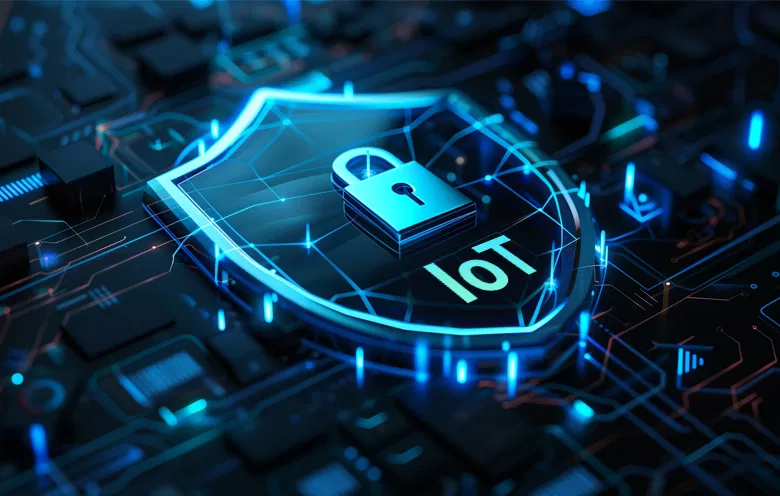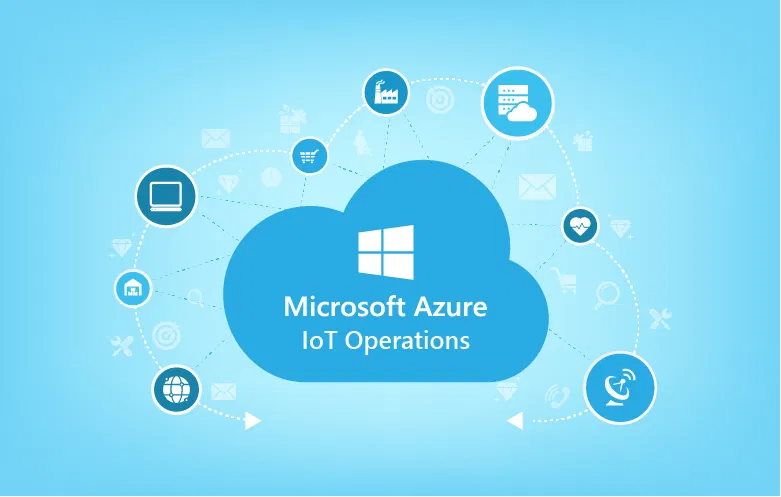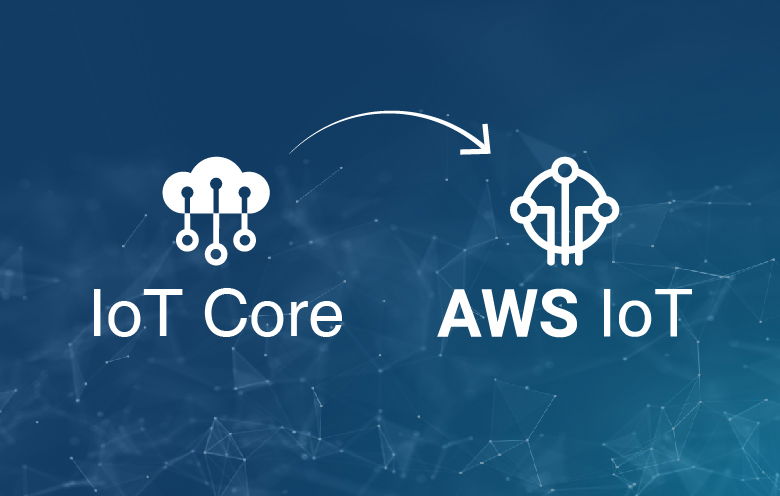Hello Everyone!
And a very good day to all of you!
I’m Gary Ramsey, Sr. Engagement Manager at Softweb Solutions, an Avnet company.
Before I start the podcast, I’d like to say a bit about the current situation that is facing us all over the world.
Humanity always drives toward excellence. And regardless of the industry, we’ve always strived to excel in the face of uncertainty.
But today, due to the COVID-19 epidemic, professionals all over are compelled to step up to new challenges and learn to adapt to the new normal. Whereas most of us, depending on where you reside on this planet, are experiencing lockdown, or shelter in place, it seems tough right now, at Avnet we are adhering to the World Health Organization guidelines by practicing safe social distancing, like I hope the rest of you are too.
This is a very crucial time and it’s proving to be a game-changer, especially in the IoT industry, and I’ll be addressing specifics later on. So, as you are doing now – utilizing this time to enhance your knowledge, explore new technologies, and gaining a better understanding of how we can use knowledge to grow your businesses and most importantly – make up for the economic loss that the entire world is experiencing now.
Softweb Solutions, an Avnet company is running a series of captivating conversations about the latest Digital Transformation technologies that are disrupting every industry today– whether it is the internet of things (IoT), artificial intelligence, or mixed/extended reality implemented via mobility, wearables, chatbots, etc.
Today, we’ll be talking about how IoT will be a pivotal technology for building back our lost economic opportunities. Especially now, when billions of devices are being added to the Internet, it’s impossible to physically service every device, once deployed and we have a lot of lost time to make up. And during disasters & pandemics, in most cases we can’t go on site to service them – IoT devices, once initialized, will need to be self-aware – and nearly 100% autonomous. The only way to manage this massive deployment of IoT-enabled devices is with an IoT platform. So choosing the right partner to manage your IoT network of devices is critical to the success of your business.
SUBSCRIBE TO OUR PODCAST
Internet of Things (IoT) — a modern technology, is one of the fundamental elements under the umbrella cloud computing term: Digital Transformation. IoT is changing the whole perspective of how we are interacting with remote things – which are now being attached to the edge of the Internet at a record-breaking pace. Whether you know it or not, IoT is transforming your business operating model across people, processes, and technology; reducing the reliance on user-owned hardware and increases the reliance on subscription-based cloud services.
Additionally, the Internet of Things (IoT) is more than just sensors that capture and share data for analysis. IoT has evolved from single point remedies to robust solutions, that require a robust – expandable and user-friendly platform to manage all these IoT-enabled edge devices. An IoT platform is the underlying tool to manage a network of interconnected devices and technologies to solve a spectrum of challenging business issues.
Why are IoT platforms so important
The Internet of Things is a characteristically complex networking environment. Simply stated – IoT Platforms bridge the physical world to the corporate digital environment.
Selecting the right IoT platform that will meet (or exceed) your company needs depends upon so many factors: the need for specific hardware, real-time access, protocols, custom reports, etc.
Deploying an IoT platform in your organization will help you save money, and if done right will also save you time. When creating your IoT “Must Haves” list, you will need to take into consideration the vast number of devices and sensors you will be deploying, more than likely from a wide range of vendors, the IoT landscape is extremely fragmented – so don’t forget to evaluate the ecosystem surrounding the IoT platform you plan to select.
Yes, edge data collecting is a big piece of an IoT platform, but data is just that – Data. To maximize your edge data you need to get that data into a platform that can turn it into deep insights. Once there your platform can reduce the complexity with ease.
For example, healthcare monitoring. An IoT platform can collect live patients vital from sensors hooked up to heart monitors and EKGs, process that data for anomalies, then provide healthcare professionals with AI-based critical analyzes and suggest solutions.
Let’s begin with what is an IoT platform, why is it important for your business and how an IoT platform should be a fundamental element of your IT infrastructure — As important as your telephone system.
If you haven’t already, we highly encourage you to develop a business-first, ‘smart’ strategy for reducing costs, increasing profitability, powering productivity that requires you to select and adopt a fully functional IoT Platform. A platform that integrates and improves legacy systems, accelerates operational performance and improves quality control. Choosing the right platform will allow you to leverage analytics and Artificial Intelligence to empower better decision making, improve customer experience, and unlock new revenue streams.
An IoT-based system will always consist of devices, machines, or anything capable of automated data collection – in other words – without a human in the loop. When using a robust IoT-based system, your IoT solution will need to grow into a self-configured, adaptive, complex network that interconnects ‘things’ to the internet and provides services through smart interfaces, without human intervention. And since we anticipate billions and billions of connections – we prefer autonomously – without any intervention. Once a thing (or device) is connected with a unique identifier, we can capture data, mine it for insight and automate actionable capabilities.
The core of an IoT platform – Realizing the business value of connectivity
An IoT platform connects access points, data networks, and ultimately devices to end-user applications, which allows you to automate processes and analyze data in near real-time. In other words, IoT platforms act as middleware solutions that connect the data collected at the edge and the user-facing SaaS or mobile application. An IoT solution has multiple levels – or functions that include:
- Devices, Sensors, and controllers
- A gateway device to collect data and send them back to the server
- A communication network to transmit data
- Data analytics and data visualization software
- A user-facing application
So let’s take a closer look at an IoT system.
The major features of an IoT system include:
- Connection of things to the Internet (intranet or extranet).
- Uniquely identifiable things (e.g. RFID tags, physical objects with unique virtual and readable serial numbers, etc.).
- Ubiquity (a network that is available anywhere and anytime).
- Sensing/actuation capability (e.g. in healthcare – a glucose monitoring system, a wearables, sensors to read blood pressure, etc.).
- Embedded intelligence (e.g. artificial intelligence, machine learning, or other data modeling).
- Self-configurable (e.g. service discovery, network aware, and resource provisioning) and programmability (e.g. an adjustable threshold for triggering an alert).
So, what is an IoT platform for business
Before jumping onto the IoT bandwagon, it is very important to ensure that you have a favorable, open architecture in place. A security breach and lack of connectivity can be bad for customer satisfaction and direly affect your businesses’ bottom-line. A scenario that can be easily prevented by developing a strategic approach for your IoT initiatives.
Therefore, your first step for your IoT strategy is to determine your criteria requirements and what are your business goals? Then you can examine the lower-level details such as how to collect, monitor and control different data points from a variety of sensors. Mapping out your criteria is important for building M2M applications to guarantee you are aligning with your organization’s digital business requirements.
For example: deploying a robust fleet management and asset tracking solution built on a solid IoT Platform that incorporates a vast ecosystem will enable you to build on an open and centralized system architectures for greater connectivity options and sharing real-time information. Communication between technologies like GPS, RFID, and OBD II will enable you to track your fleets remotely and analyze various parameters within your fleet will generate deeper insights, thus leading to better management decisions.
In conclusion,
With so many smart devices rolling out in the market, the world is getting smarter every day. No matter how the current pandemic plays out, we are certain that IoT technology will have a prominent place in the new normal lifestyle.
Connected things on smart IoT platforms have the potential to unlock opportunities like never before. Deploying the right IoT platforms will help you automate your business processes and save a lot of time and money.
With this, I’ll end our first podcast. Thanks for your time and attention. If you have any questions, feel free to contact me via my email address info@softwebsolutions.com. I’d be happy to answer your questions.
Stay tuned to our channel and join us again soon for our next episode in our Digital Transformation series because we have two healthcare IoT related blog post going online soon.
And most important – Stay safe.
Goodbye for now!



